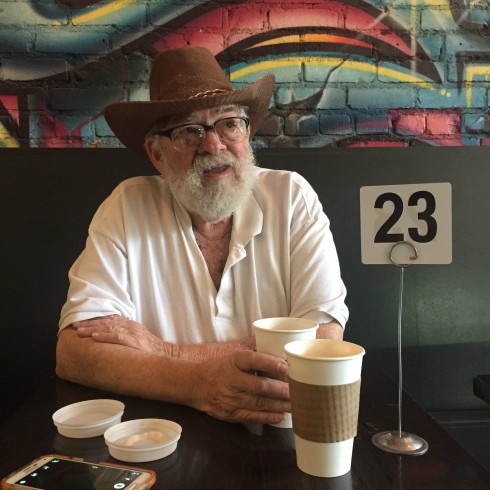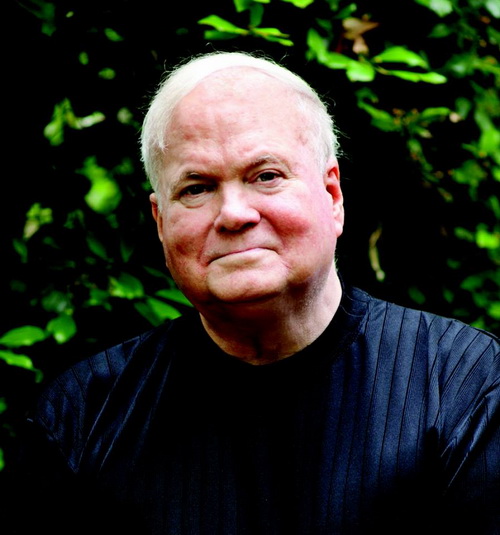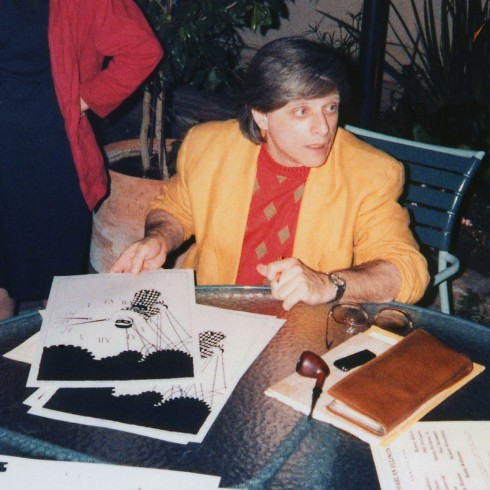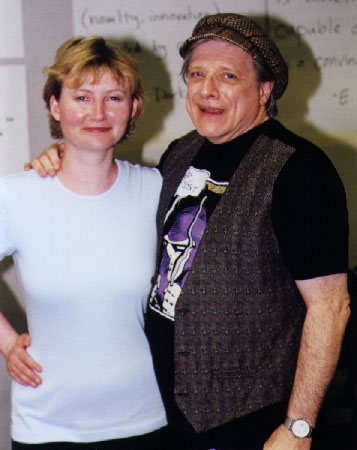PAT CONROY: A SOUTHERN VOICE FOR THE AGES
By Bob Vickrey
When best-selling author Pat Conroy was once asked by his literary agent why there was not more sex in his novels, he responded, “Because my grandmother is still alive.”
When he told that story at book signings and speaking events, there was always an eruption of laughter and applause in the room. Everyone in attendance fully understood the precarious minefield a writer navigates when it comes to family matters.
Nevertheless, after more than four decades of writing about family, there are legions of his loyal fans who would attest to the boldness of his work. His novels, The Great Santini and The Prince of Tides, were bothfictionalized chronicles of the tumultuous Conroy family household that endured the tyrannical behavior of their Marine Corps fighter-pilot husband and father.
When news of the author’s recent death was announced, an incredible outpouring of tributes ensued in the days afterward. Conroy died March 4th in Beaufort, South Carolina after having been diagnosed with pancreatic cancer several weeks ago. When the announcement was placed on Facebook shortly after the diagnosis, two million responses were posted on his site within the first two days. Read more
Are Things Really Changing?
 LIONEL ROLFE, STILL HANGING OUT IN COFFEE HOUSES
LIONEL ROLFE, STILL HANGING OUT IN COFFEE HOUSES
I woke up to yet another morning pondering whether this is the way you go out when time is passing you by. Yeah, I am old, a bit worn out in spirit and in body, beaten by my job as a wire service journalist as well as a whole world that is passing me by.
All the young ones insist they have it down right. To me, their music sounds alike and trite and pitiful, but they tell me it puts Bach and Beethoven to shame. I know of one modern young woman who insists that Heavy Metal is modern Beethoven — I’m afraid I sneered at the notion. And I know she is wrong.
I might have worked in journalism for at least half a century, but they tell me that they got that down as well. To me, their writing all reeks of what we used to call “headline journalism” — short and pithy ways of saying nothing. Spare me the nonsense.
Hey kids, you simplify to meaninglessness, and pretend it is profound. You use algorithms that force simple words to sound profound. I’d like to say this is just an electronic rediscovery of penny journalism from the days of Pulitzer and Hearst. But electronically created phrases are still no better than Pulitzer’s “Go West Young Man.” And Hemingway and Shakespeare also wrote some simple old ‘grafs, as fine as any of them to be found with the help of algorithms. Read more
MODERN DAY “MUNCHKINS” OUSTED AT CULVER HOTEL
By Bob Vickrey
In the last year, our monthly lunch club has visited several of the oldest Southern California hotels in our ongoing quest to dine in some of the areas most famous and historic restaurants.
One of the city’s often-forgotten gems is the 92 year-old Culver Hotel in downtown Culver City. The six-story red-brick flatiron landmark was built by real estate developer and philanthropist Harry Culver in 1924, and was designed by the same architectural firm that drew the plans for the Roosevelt Hotel in Hollywood.
When the hotel opened, the nearby Culver Studios was a burgeoning center of the film industry, and it played host to movie stars like Buster Keaton, Clark Gable, Greta Garbo, Douglas Fairbanks, and Judy Garland. In fact, cast members of Gone with the Wind and The Wizard of Oz stayed at the Culver during filming of both 1939 pictures, including more than 100 of the actors portraying the famous “Oz Munchkins.” Read more
Opposition Mounts over Los Angeles Seizure of Tiny Homes for the Homeless

One of Elvis Summers’ tiny houses, taken from a homeless man on the 42nd Street bridge over the Harbor Freeway.
Leslie Evans
Seizure by city workers of three Tiny Houses from homeless people February 12 has led to an outpouring of protest, ranging from the prestigious Los Angeles Times to a demonstration at City Hall and a lawsuit filed in the federal U.S. District Court, as well as widespread support for the Tiny House efforts by a wide range of homeless activists and their supporters.
There can be little question that if you are living under a tarp that one of these 6X10 foot wooden shed-type structures, with a lock on the door and solar panel for electricity, is a huge improvement. To date, 37 of them have been built, at a cost in materials of $1200 each, by Elvis Summers. He has raised more than $100,000 for the project from a GoFundMe appeal, and has distributed them over a wide area, from Van Nuys to Compton and Inglewood.
The city government has insisted that the little houses are not needed because it plans to construct housing for all of the homeless in the county. Those plans, however, lie in a vague future at least ten years away and to even get on the drawing board are dependent on passing multiple ballot measures that require a two-thirds majority and may not even be scheduled for a vote before the spring of 2017. That does nothing for someone living on the streets now. Read more
America’s Tiny House Villages for the Homeless
Leslie Evans
The debate in Los Angeles city government over what to do with the tiny houses for the homeless, being built and distributed by Elvis Summers, needs to include awareness of the nationwide experiments taking place in cities across the country in establishing small villages of these kind of structures as one additional tool in reducing homelessness. They are a transitional step between the streets and permanent housing, while permanent housing for all of the homeless remains a distant dream. This is the obvious alternative to the positions currently dominating the debate: either to leave the little houses on the streets or to destroy them and expel their residents.
No one imagines that there will be enough of these kind of shelters to end homelessness or that they would be ideal if there were. But as it sinks in that providing real homes for such multitudes is at best relegated to the far future, city councils and even the federal government are beginning to see the tiny house movement, adapted to the homeless, as contributing to getting people off the street and restoring their dignity by providing a dry, secure, stable place to live, and privacy that is impossible sleeping under a tarp in an alley.
The typical pattern for these settlements is to find a piece of land, preferably an acre or two. Some cities have used existing prefab wooden sheds, commonly 8 X 10. To work best, the place needs a central building with running water and electricity, for toilets, showers, and communal cooking. Building codes for housing are often sidestepped by classifying the villages as campgrounds or putting the houses on wheels and rating them as trailers. Read more
Erica Ponygirl: Another Take On Horse Controversy
This is an issue that too few LA residents are really aware of or understand. Horses are a small blip on the radar of our citizenry for the most part but we horse people are hanging onto our last corners of town to keep the hobby alive !!! A small price to pay for the hundreds of square miles bikes can go and horses cant in LA. We are trying to keep the horsie lifestyle alive as long as we can!!!!
Hope alls well with you! I always enjoy reading your Boryanabooks! I had to comment on the piece about the Burbank horse bridge since I’ve been in that group for the last 40 years and have been privy to all the emails back and forth about their meetings and encounters.
The bike people will never give up on harrassing the horse people on the subject of bikes on the horse trails. It never ends and at least now there is an official motion to end the conflict for a while in Griffith park! That bridge was built for HORSES only! No one ever rode bikes on park trails back when it was built, but now with the big bike craze in our modern culture, the bike people want to go wherever they like. Unfortunately horses havent changed in the last millenia and the bike people dont get it. That bridge goes only to a dedicated, fenced in horse trail that has been there since 1938! Read more
Mary Reinholz Writes About Harlan Ellison
All photos are by Jill Bauman. This is Ellison at the L.A. Press Club.
Ellison with the green lantern ring
Ellison with wife Susan
MARY REINHOLZ
Way back in 1965, not long after Harlan Ellison had completed a screenplay called “The Oscar,” he was confronted by Frank Sinatra in a pool room at the Daisy, a private Beverly Hills club on Rodeo Drive.
The crooner, formally attired and holding a drink, took exception to Ellison’s game warden boots, according to New Journalist Gay Talese, who wrote a celebrated article for Esquire, “Frank Sinatra Has a Cold,” that cites a clash between the two men.
Sinatra, close to 50 at the time and accompanied by four friends, asked the jockey-sized Ellison three times if he knew what the make of his boots was. Three times Ellison replied in the negative, finally telling Sinatra, “Look, I dunno, man.”
Talese recounted how the poolroom fell silent. Sinatra sauntered over to the much younger man, someone he didn’t know. “You expecting a storm?”
Ellison snapped back. “Is there any reason why you’re talking to me?” Read more
Honey goes down the first roads in California
NOTES FROM ABOVE GROUND
By Honey van Blossom
(Honey is a Belgian Marxist former strip-tease artiste)
Saturday I joined a Greenbelt Alliance hike through the Black Diamond Mines Regional Park, which is roughly between Clayton and Antioch. Black Diamond refers to the coal mined there between about 1860 to the early 20th century.
The Greenbelt Alliance has for sixty years worked for the preservation of open spaces and agricultural land. The hikes it sponsors and co-sponsors take people in the Bay Area into wonderful places – as does the Sierra Club and other public interest organizations.
It had rained heavily a few days before we started on the hike. The hills were vibrantly green. One of the leaders remarked that the human cones in the eye are more sensitive to green frequencies than any to any other color. Color isn’t real; that is, all colors are only electromagnetic radiation, which is a spectrum.
We may have more sensitivity to shades of green because human beings evolved in Africa, and it was green. Prey animals need to see what doesn’t belong in a green background. Predators usually – not predator birds of course — approach from the ground. Once a prey animal sees a predator, it then needs to see where to go. Read more









